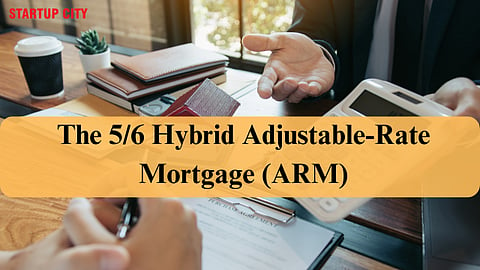

Understanding mortgage can seem tricky, but you should know about the 5/6 Hybrid Adjustable-Rate Mortgage (ARM). It's a special type of home loan that combines the features of fixed-rate and adjustable-rate mortgages, giving you stability and flexibility. Let's take a closer look.
The 5/6 hybrid adjustable-rate mortgage (ARM) is a home loan with a fixed interest rate for the first five years, after which the rate can change every six months. This mortgage blends features of fixed-rate and adjustable-rate mortgages.
It's crucial to note that the interest rate adjustment typically follows a common benchmark index. While this mortgage may provide lower initial rates, there's a risk involved: if interest rates increase, monthly payments could rise, potentially challenging for some borrowers to handle.
A 5-6 Hybrid Adjustable-Rate Mortgage (5-6 Hybrid ARM) operates on a distinct structure: it kicks off with a fixed interest rate for a predetermined period, usually five years, before shifting to an adjustable rate for the remainder of the loan term. This adjustable rate is tied to a benchmark index, such as the prime rate, with the lender adding a predetermined margin.
For example, if the index is at 4% and the lender's margin is 3%, the borrower's fully indexed interest rate would be 7%. It's essential to note that these mortgages often incorporate caps, which establish limits on how much the interest rate can escalate over the life of the loan. These caps act as safeguards against potential surges in interest rates that could otherwise make monthly mortgage payments challenging.
Lenders rely on various indexes to determine interest rates for 5/6 hybrid adjustable-rate mortgages (ARMs), with common ones being the U.S. prime rate and the Constant Maturity Treasury (CMT) rate. When interest rates are rising, borrowers benefit more from longer intervals between interest-rate reset dates.
For instance, a 5/1 hybrid ARM proves advantageous over a 5/6 ARM in such scenarios, as its interest rate adjusts less frequently, providing greater stability. Conversely, in a declining interest-rate environment, the situation reverses, favouring the 5/6 ARM due to its more frequent adjustments that can capture lower rates faster.
A 5/6 hybrid adjustable-rate mortgage (ARM), akin to many other ARMs, usually initiates with lower interest rates than fixed-rate mortgages. This lower initial rate could lead to significant savings for borrowers, particularly if they plan to sell the home or refinance their mortgage before the fixed-rate period of the ARM concludes.
However, borrowers should exercise caution to ensure that the ARM they select doesn't come with substantial prepayment penalties, which could negate potential savings.
Despite its benefits, the 5/6 hybrid ARM carries a notable risk linked to fluctuating interest rates. With the interest rate resetting every six months following the initial five-year fixed period, borrowers may encounter rising monthly payments, potentially becoming difficult to manage over time. In contrast, a fixed-rate mortgage maintains a steady interest rate throughout the entire loan term, providing stability and predictability.
However, if the 5/6 hybrid ARM includes both periodic and lifetime caps on interest rate increases, it can mitigate this risk, offering some protection against substantial rate hikes.
The interest rate for a 5/6 adjustable-rate mortgage (ARM) undergoes a two-step process. Initially, the lender establishes the fixed rate for the first five years based on factors like the borrower's creditworthiness and prevailing market interest rates. Following this initial fixed period, the interest rate transitions to an adjustable rate, influenced by a benchmark index, such as the prime rate, along with an additional percentage set by the lender, known as the margin. This blend of the benchmark index and the lender's margin determines the adjusted interest rate for the remainder of the loan term.
In summary, the 5/6 hybrid ARM presents a combination of fixed and adjustable rates, offering borrowers flexibility in managing their mortgage payments. Grasping its workings, potential risks, and advantages is pivotal in making a well-informed decision regarding your home loan.